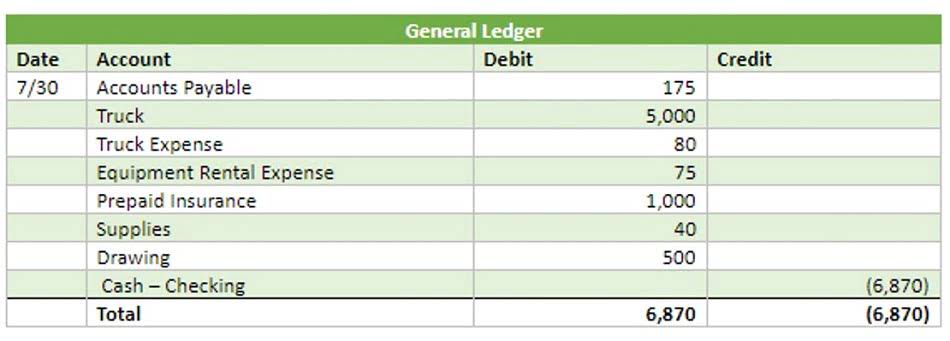What Are Liabilities? Definition and Examples
03/09/2021
2022 Web Design Trends to Inspire Your Next Website Project
02/01/2022
Efficient supply chain management plays a crucial role in controlling manufacturing costs. Analyze your supply chain for opportunities to consolidate suppliers, negotiate better terms, reduce lead times, and minimize transportation costs. Utilize technologies like supply chain analytics and forecasting tools to make informed decisions and improve overall efficiency. This concept suggests that as production volumes increase, the cost per unit Accounting for Marketing Agencies of production tends to decrease.
- It offers automated bookkeeping, invoicing, expense tracking, and inventory management, making accounting more efficient and hassle-free.
- For instance, when manufacturing a simple T-shirt, fabric, thread, and labels are considered direct materials.
- While this strategy can lead to economies of scale, it also risks producing excess inventory that can tie up resources.
- Grasping direct costs is crucial for analyzing production expenses and making informed financial decisions.
- Manufacturing work in progress ties up resources, creating a financial burden that hasn’t yet generated revenue.
Step 1: Calculate direct hourly labour rate

This not only has financial benefits but improves your environmental standing too (as you will produce less waste if you only have the materials you need). By having less produce in the warehouse at any given time, fewer storage costs are incurred, and your facility is far more organised as a result. There are some well-known stock control strategies (such as lean manufacturing) that can be utilised to achieve these outcomes. When looking at total manufacturing cost, you might not only learn that the materials being bought are too expensive, but also that excessive quantities are being bought unnecessarily. By analysing the amount of excess that is usually generated during production, you can use this to adopt a more sparing approach to purchasing.
Manufacturing Overhead Cost
- Discrete manufacturing involves the production of distinct items, such as cars, electronics, or furniture.
- Take advantage of any bulk-buy discounts or seasonal supply-side surplus to guard against off-season price increases.
- The process below breaks the equation down into discrete steps so you can feel confident that your calculations incorporate all the important variables.
- Total manufacturing cost is a financial metric that expresses the total amount of funds spent on all production activities during a financial period.
- To find manufacturing overhead, identify the manufacturing overhead costs then add them up.
- They include factory utilities, rent, maintenance, depreciation of machinery, and indirect labor.
- For few business its good, but for larger machine assemblies this may not be needed.
Direct labor costs include the wages and benefits paid to employees directly involved in the production process of goods or products. Accurate cost calculation contribution margin helps companies identify the processes or materials that are driving up manufacturing costs and determine the right pricing of products — the keys to remaining profitable. To find manufacturing overhead, identify the manufacturing overhead costs then add them up. Now you can determine the manufacturing overhead rate — this is the percentage of your monthly revenue that goes towards paying for overheads each month.
- Manufacturers that don’t possess an accurate picture of spend will often have a distorted perception of their financial health, which could cause them to budget poorly.
- These indirect costs, also called factory or manufacturing overheads, include costs related to property tax, insurance, maintenance, and other indirect operations that support the production process.
- Few of above costs are taken as “Capital costs” and rest are as “Operating expenses”.
- Indirect costs in manufacturing are usually constant and fixed expenses like overheads.
- For instance, in an automotive factory, indirect costs might include facility upkeep and production line maintenance costs.
Determine the Quantity of Materials Used

In this article we look at the details of what makes up total manufacturing costs, how to work out its component parts – and, importantly, how to reduce some of these costs in a manufacturing business. By analyzing these costs in relation to production levels, companies can better forecast expenses and adjust their operations accordingly. This proactive approach helps in maintaining a competitive edge, especially in industries where profit margins are tight and efficiency is paramount. Moreover, the total cost formula plays a crucial role in budgeting and forecasting within the manufacturing sector. By analyzing historical data and market trends, manufacturers can project future costs and revenues, allowing them to make total manufacturing cost formula proactive adjustments to their operations. This foresight is particularly important in an ever-evolving market where fluctuations in material prices or changes in consumer demand can significantly impact profitability.

To calculate total manufacturing costs, you must first sum up all the direct materials used in production. Knowing how to calculate total manufacturing costs is incredibly important supply chain data. If you know your inventory value, you can calculate your company’s sales margins and use that information to identify where you could trim unnecessary expenses. Calculating manufacturing costs helps determine pricing, control expenses, and maximize profits.

Direct Materials Cost
To find the opportunity cost of investing in more marketing, the company subtracts $600,000 from $800,000. The $200,000 represents what the company gives up by pursuing marketing over more sales reps. Opportunity cost represents the benefits your business misses out on when choosing one course of action over available alternatives. It helps decision-makers contextualize the costs and benefits of their choices by highlighting what could’ve been gained by pursuing other options. In this article, we’ll break down what opportunity cost is, how it impacts financial decision-making, and how you can calculate it to make smart business choices in almost any scenario.

